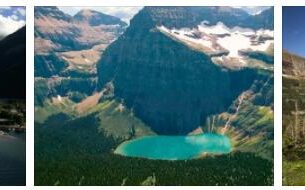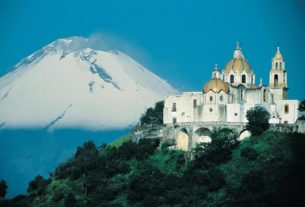According to franciscogardening, Montreal [m ɔ ntr ɪ ɔ ː l, English], French Montréal [m ɔ re al], is a town in the province of Quebec, Canada, with (2019) 4.3 million residents in the metropolitan area is the second largest city of Canada (1.8 million residents in the core city of Montreal).
Montreal is located on a 50 km long, up to 16 km wide river island (Île-de-Montréal) between Rivière des Prairies (middle branch of the Ottawa River, which flows with another branch before) and the Saint Lawrence River. 57% of the Montreal population report French as their first language. After Toronto and Vancouver, the city is the third most important destination for international immigrants.
Montreal is the Catholic Archbishopric and Anglican Bishopric as well as an important university and cultural center. Two universities have French as the language of instruction (Université de Montréal, founded 1878; Université du Québec, founded 1968), English is taught at McGill University (founded 1821) and Concordia University (emerged in 1974 from Sir George Williams University and Loyola College). Montreal is the seat of the National Library of Quebec and has museums (especially art and historical museums, architecture museum), symphony orchestra, planetarium, botanical and zoological garden, Olympic Stadium (venue of the XXI Summer Olympics in 1976). Since 1977 Montreal has hosted the annual international “Festival des Films du Monde”.
Montreal is the seat of banks, insurance companies, corporate administrations and trading companies. The industry includes wagons, locomotives, aircraft, electrotechnical, textile, important petrochemical industries (six oil refineries in East Montreal), also pharmaceuticals, tobacco, shoe, food industry, beer breweries, fur processing. Since the 1960s, industry has been relocated to the suburbs and, due to language policy, also to Ontario. As a result, Montreal has lost importance compared to Toronto. The port of Montreal on the St. Lawrence Seaway is particularly important for the grain trade, and Montreal also has one of the largest container ports in Canada. Montreal has two international airports and a subway since 1967.
Cityscape
The old town of Vieux-Montréal was placed under protection in 1967 and attracts numerous tourists. Well-known buildings here are the Château Ramezay (1705; formerly the governor’s seat, museum since 1929) and the Church of Notre-Dame de Bonsecour (1771, Church of the Sailors). The landmark of the old town is the Oratoire Saint-Joseph (1924–67) church, one of the most important pilgrimage sites in North America.
The Place des Arts (1963) is home to the opera and theater; the Place de Ville-Marie (1960–65) designed I. M. Pei. As the city of the World Exhibition of 1967 and the Olympic Games of 1976, Montreal was impressively modernized: the USA pavilion by R. B. Fuller, the German pavilion by F. Otto and R. Gutbrod; M. Safdie created the terrace block high-rise »Habitat 67«. In connection with the construction of the subway and the foundation of the high-rise buildings, 16 km of underground shopping arcades with hotels, restaurants, bank branches, theaters, cinemas and congress centers were built in 1960–91. The notable modern buildings also include the 34-story “Maison des Coopérants” (1985–87), an administrative building with a glass outer skin; the new building for the Canadian Center for Architecture, which Peter D. Rose (* 1943) created 1983–89, integrating a 19th century mansion; the “Complexe Chauseegros-de-Lery”, the town house of Montreal (1987–91), by Dan S. Hanganu, Provencher Roy and Cardinal Hardy. New museum buildings were also built: the extension of the Musée McCord, which LeMoyne, Lapointe, Magne carried out from 1988–92; the Musée d’Art Contemporain (opened in 1993) by the Jodoin, Lamarre, Pratte offices; the Musée Pointe-à-Callière (1992) by Hanganu and Roy. – In Caughnawaga, the Indian reservation on the south bank of the Saint Lawrence River, the Kateri Tekawita Museum of Indian Culture and History.
History
In 1642, under French leadership, settlers settled in the former Indian village of Hochelaga, which J. Cartier visited in 1535 and in the vicinity of which – it was probably already destroyed – S. de Champlain had established a first settlement in 1611. The French settlers founded Ville-Marie, which was later renamed after the Mont Royal. A strategically important point in the struggle against the British colonies for France in the Seven Years War, the city was ceded to Great Britain in 1760 as the last French bastion. In 1775/76, American troops occupied Montreal, and from 1844–49 the city was the capital of Canada. Montreal, already an important fur trade center during the French colonial era, developed into an economic, but also a cultural and religious center in the 19th century.



